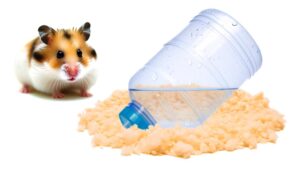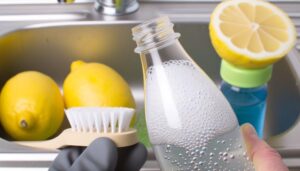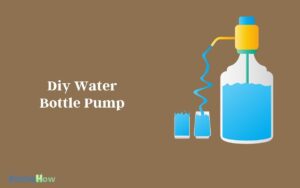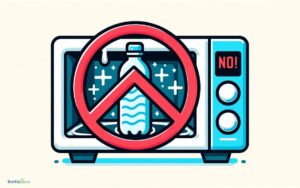Water Bottle to Keep Water Cold
To keep water cold, invest in an insulated bottle. These bottles use double-walled vacuum insulation to block heat transfer, ensuring drinks stay cold for hours.
Brands like Hydro Flask and Yeti offer outstanding temperature retention, though they can be pricey and heavy. Opt for stainless steel for superior insulation, but note it adds weight.
Plastic is lighter and cheaper but less effective. Staying hydrated with cold water boosts energy and metabolism, especially in hot weather.
Finding the right balance between cost, weight, and insulation efficiency is key. Explore further to uncover the best fit for your needs.
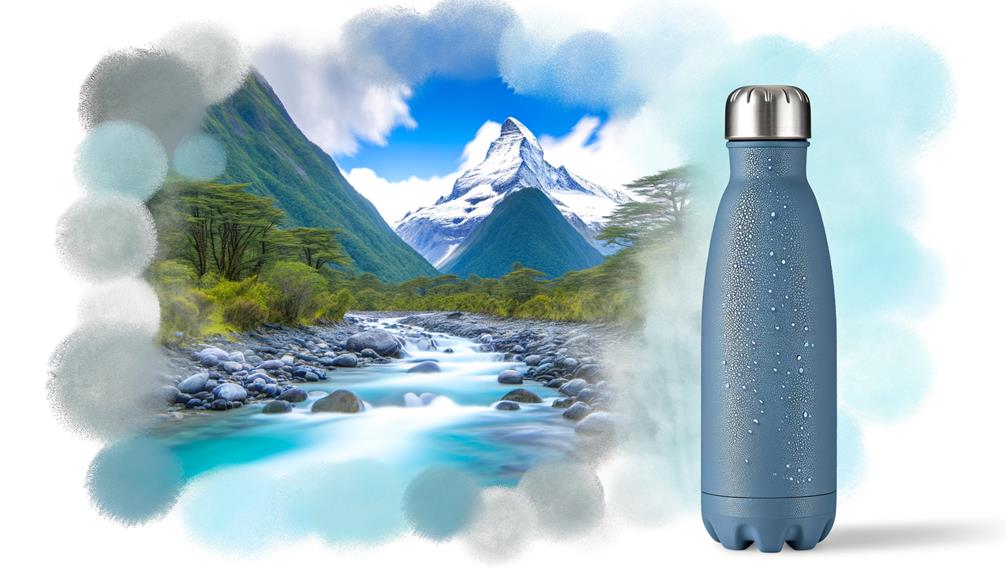
Key Takeaways
- Insulated bottles with double-walled vacuum insulation maintain cold water temperatures for extended periods.
- Stainless steel materials offer superior insulation and durability compared to plastic or glass.
- Brands like Hydro Flask and Yeti provide top-tier temperature retention, keeping drinks cold for up to 24 hours.
- Sealed lids are crucial to preventing warm air from entering and cold air from escaping.
Importance of Cold Water
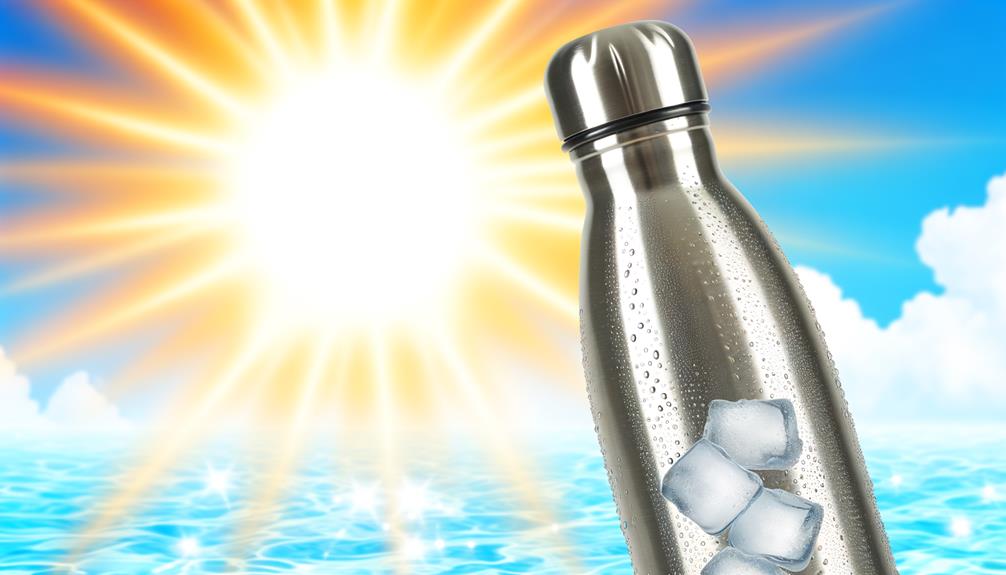
Understanding the importance of cold water can greatly impact your daily hydration habits and overall well-being. Cold water can be more invigorating, especially during hot weather, encouraging you to drink more. This helps in staying hydrated, maintaining energy levels, and supporting bodily functions. Cold water can also aid in slightly boosting metabolism as your body works to warm it up.
However, there are some cons. Drinking very cold water might cause discomfort or even brain freeze. For those with sensitive teeth or throat conditions, cold water can be problematic.
Also, in some situations, room temperature water might be more effective, such as during intense workouts, where it's absorbed more quickly.
Balancing cold water intake with your personal needs is key.
How Insulation Works
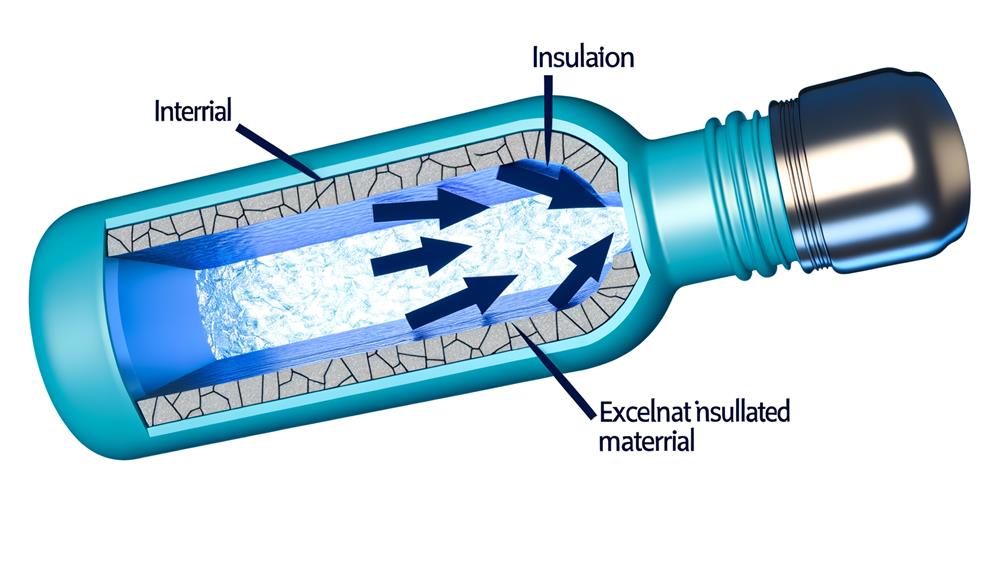
You'll find that insulation works by creating a thermal barrier, effectively slowing down the transfer of heat.
Different materials vary in efficiency, with some providing better insulation than others.
Understanding these aspects helps you choose a water bottle that keeps your drink colder for longer, but it may also come with a higher price or increased weight.
Thermal Barrier Mechanism
When it comes to keeping your water cold, the thermal barrier mechanism in insulated bottles plays an essential role by minimizing heat transfer. This mechanism often involves double walls with a vacuum between them, reducing heat conduction and convection. From your perspective, this means your drink stays invigoratingly cold for hours. Additionally, some advanced designs incorporate reflective coatings to further limit radiant heat transfer, enhancing the bottle’s cooling efficiency. This innovation helps prevent external temperatures from affecting your drink, ensuring long-lasting refreshment. In certain cases, cold water bottle supercooling can occur, where the liquid remains below its freezing point without turning into ice, offering an extra-chilled drinking experience.
A major pro is the efficiency in temperature retention. However, there are cons like added weight and higher costs compared to non-insulated bottles. Also, the vacuum seal can sometimes be compromised, reducing effectiveness.
Understanding this mechanism helps you appreciate why these bottles are pricier but worth the investment for long-lasting cold drinks. You're making a choice that balances performance with convenience.
Material Efficiency
To grasp how insulation works in keeping your water cold, let's explore the material efficiency of these bottles. Insulated water bottles often use double-walled stainless steel with a vacuum between the walls. This design minimizes heat transfer, keeping your drink cold for hours.
Here's a breakdown:
| Material | Efficiency (Pros) | Drawbacks (Cons) |
|---|---|---|
| Stainless Steel | Excellent insulation, durable | Heavier |
| Plastic | Lightweight, affordable | Poor insulation, less durable |
| Glass | Non-toxic, eco-friendly | Fragile, heavier |
Stainless steel is popular for its superior insulation and durability, but it's heavier. Plastic is lightweight and cheap, yet it lacks effective insulation. Glass offers a non-toxic alternative but is fragile. Understanding these trade-offs helps you choose the right bottle for your needs.
Key Features to Look For
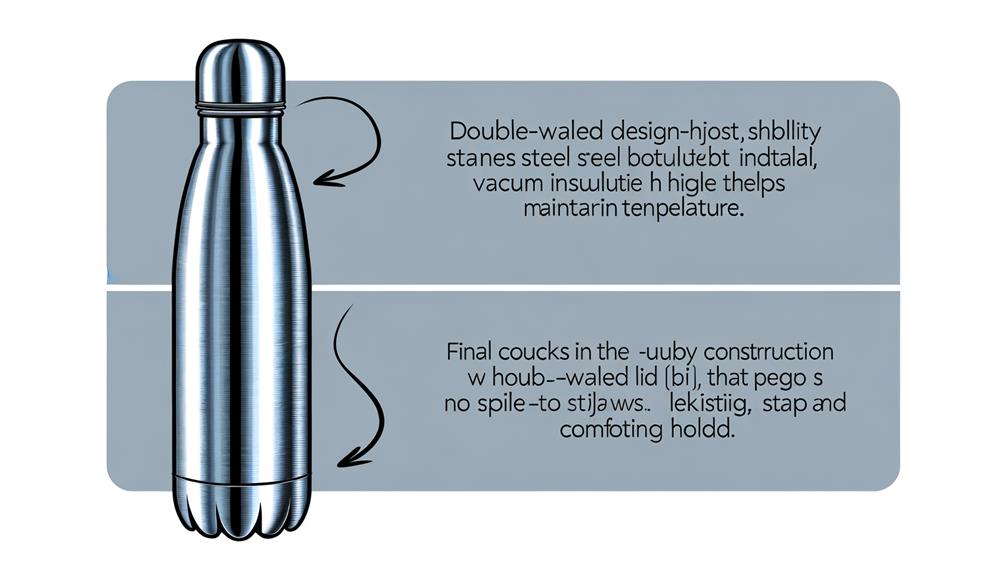
A well-insulated water bottle with double-wall vacuum insulation is essential for keeping your water cold for extended periods.
When choosing a bottle, you should consider several key features:
- Material: Stainless steel is durable and resists odors, while plastic is lightweight but might retain flavors.
- Capacity: Larger bottles hold more water but are heavier, whereas smaller ones are more portable.
- Lid Design: Leak-proof lids prevent spills, and wide-mouth designs make cleaning and adding ice easier.
- Ease of Cleaning: Bottles with minimal parts and dishwasher-safe components simplify maintenance.
Pros include long-lasting cold water and durability, but cons may involve weight and potential flavor retention.
Prioritize what matters most to guarantee you get a bottle that fits your needs.
Benefits of Insulated Bottles
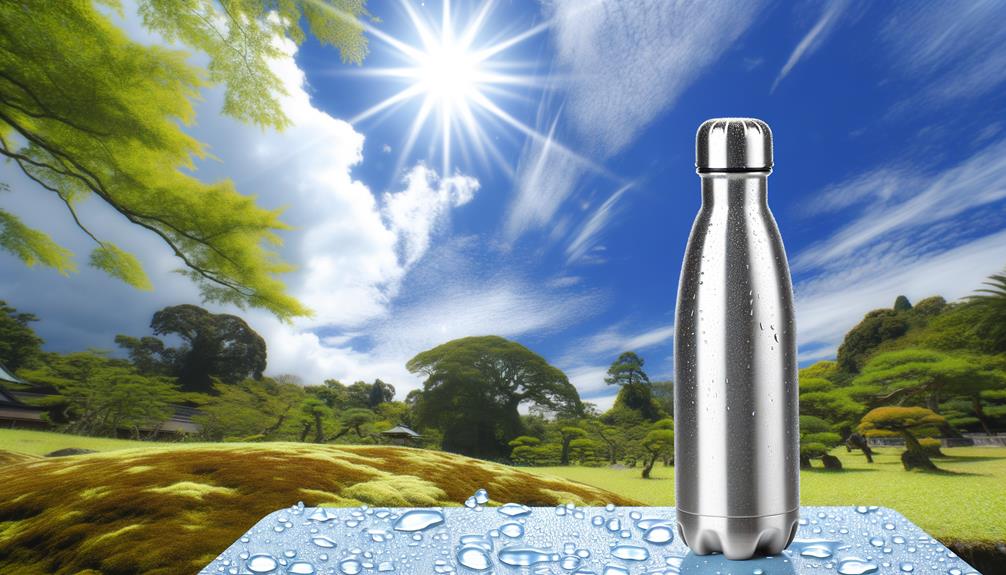
You'll find insulated bottles incredibly beneficial for keeping your water cold for extended periods, ensuring refreshment during long days.
They're also an eco-friendly choice, helping you reduce plastic waste and lessen your environmental impact.
On the downside, they can be pricier and heavier than non-insulated options.
Temperature Retention Advantage
Have you ever wondered why insulated water bottles are so effective at keeping your drink cold for extended periods? Insulated bottles leverage advanced technology to maintain temperature. Here's a detailed analysis from your perspective:
- Vacuum Insulation: By creating a vacuum between two walls, heat transfer is minimized, keeping your drink cold.
- Double-Walled Construction: This design adds an extra layer of protection against temperature changes, ensuring your beverage stays chilled.
- Material Quality: High-grade stainless steel is often used for its thermal retention properties and durability.
- Sealed Lids: Airtight lids prevent warm air from entering and cold air from escaping.
Pros include long-lasting cold drinks and durability.
However, cons might be the higher cost and weight compared to standard bottles.
Eco-Friendly Choice
Opting for an insulated water bottle greatly reduces plastic waste, making it an eco-friendly choice that benefits both you and the planet.
By using an insulated bottle, you'll cut down on single-use plastics, which pollute oceans and harm wildlife. These bottles are reusable, durable, and often made from sustainable materials like stainless steel. They also keep your drinks cold or hot for hours, enhancing your hydration experience.
However, they can be pricier upfront and heavier to carry. Despite these cons, the long-term savings and environmental impact make them worth it.
You'll contribute to a cleaner planet and enjoy the practical benefits of a well-insulated bottle.
Top Water Bottle Brands
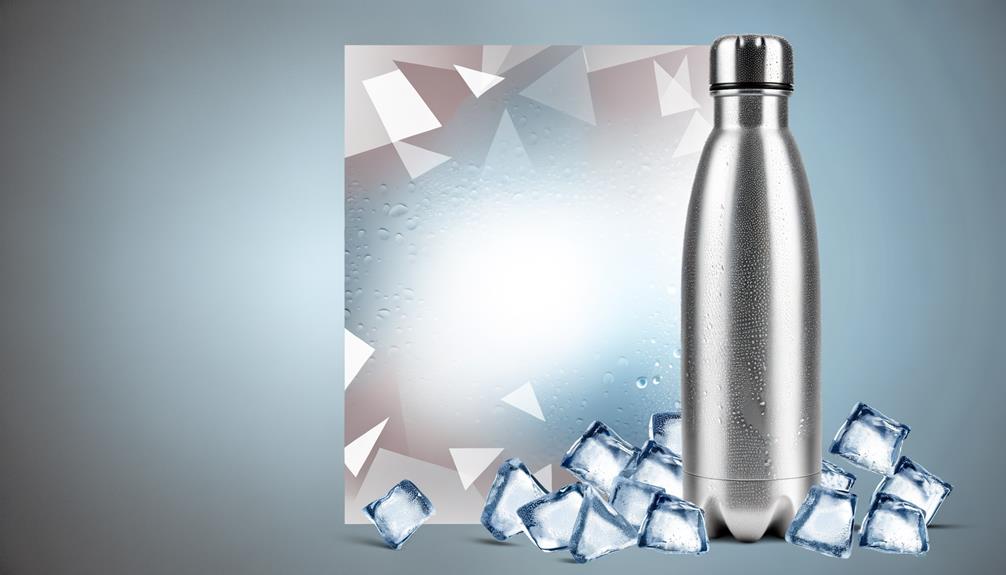
When choosing the best water bottle to keep your water cold, Hydro Flask, Yeti, and S'well stand out for their exceptional insulation, durability, and design. Each brand offers unique features to take into account:
- Hydro Flask: Known for its TempShield insulation, it keeps drinks cold for up to 24 hours. However, it can be pricey.
- Yeti: Its double-wall vacuum insulation is first-rate, but it's heavier compared to others.
- S'well: This brand combines style with functionality, boasting triple-layered insulation. On the downside, it's more susceptible to dents.
- Thermos: Offers reliable performance at a more affordable price, though it might lack the sleek design of others.
Evaluate your priorities—whether it's insulation, durability, weight, or cost—to make the best choice.
Maintenance and Care Tips
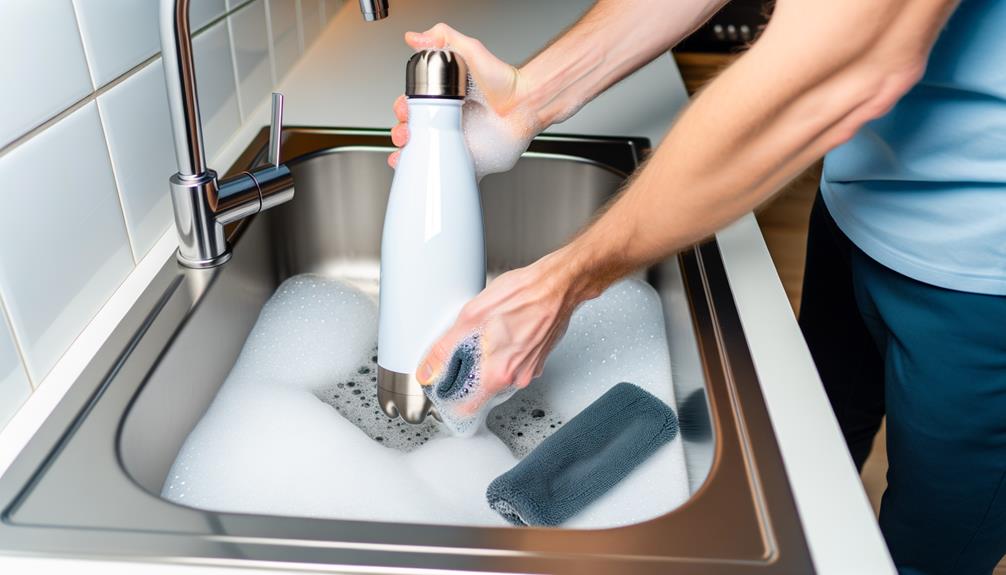
To guarantee your water bottle maintains its performance and longevity, regular cleaning and proper care are essential. Rinse your bottle daily with warm water and mild soap. Avoid harsh chemicals—they can break down the bottle's materials over time.
Monthly deep cleaning with baking soda and vinegar can help eliminate stubborn odors and stains. If your bottle has a straw or small parts, use a brush to reach tight areas.
Pros: Regular maintenance guarantees your bottle remains hygienic and efficient at keeping water cold. It also extends the bottle's lifespan, saving you money.
Cons: Regular cleaning can be time-consuming, especially for bottles with intricate designs. However, neglecting care can lead to mold growth and degraded insulation performance.
Understanding these tips will help you enjoy a revitalizing drink every time.
Conclusion
In choosing the perfect water bottle to keep your water cold, you’re not just buying a product—you’re investing in your well-being. A high-quality bottle ensures your drink stays refreshingly chilled for hours, making it easier to stay hydrated throughout the day. When considering ways to keep your beverage colder for longer, you might compare ice pack vs frozen water bottle methods to see which works best for your needs. Both options have their advantages, but a well-insulated bottle can enhance either choice by maintaining your desired temperature.
With high-quality insulation, user-friendly features, and lasting durability, these bottles make staying hydrated a delight.
Brands like Hydro Flask and YETI stand out for their exceptional quality.
Remember, a well-maintained bottle guarantees peak performance.
So, why wait? Embrace the chill and elevate your hydration game today.
It's a small change with a big impact.


